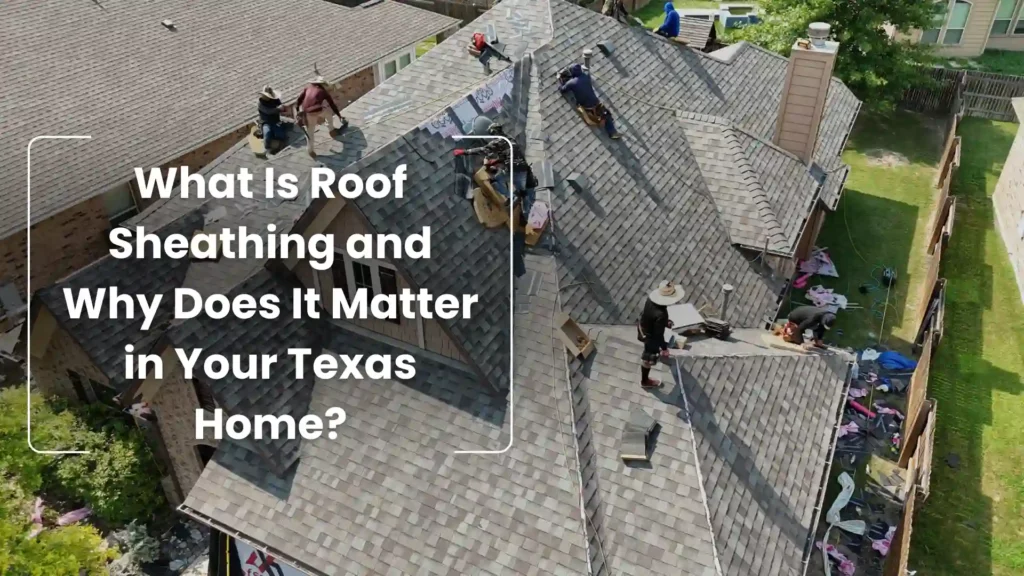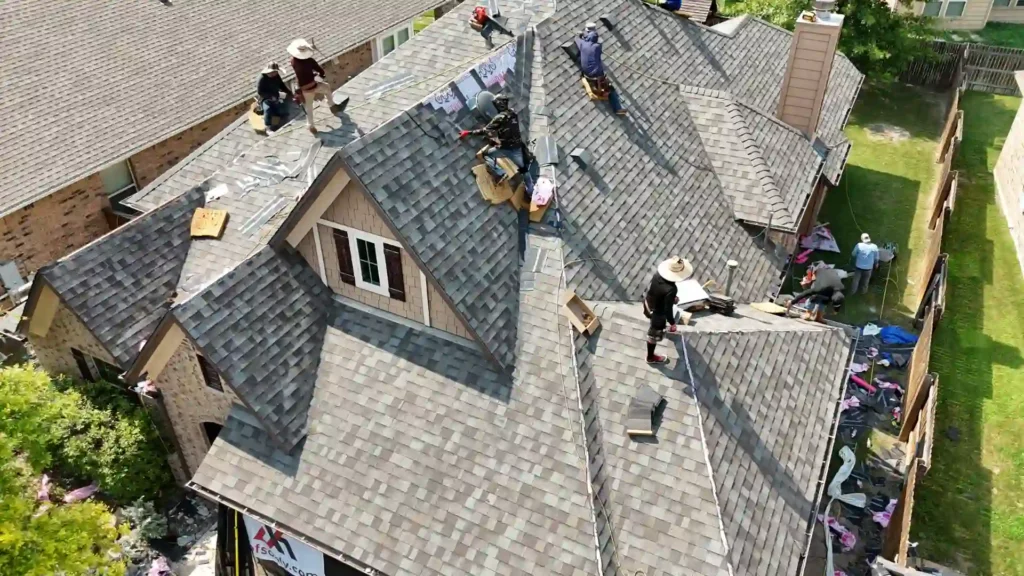What Is Roof Sheathing and Why Does It Matter in Your Texas Home?


Your roof does much more than keep out the sun and rain. It’s a system of layers working together to protect your home and family. The roof sheathing is one of the most critical but overlooked components of your home’s roof.
Roof sheathing is the flat layer of boards or panels between your roof’s framing and shingles. It provides a solid surface for roofing materials to adhere to and is crucial for overall strength and weather resistance. Why does roof sheathing matter to your home? It’s because you want to choose the right materials to put between you and the harsh Texas elements.
What Is Roof Sheathing?
Roof sheathing is the first layer of any roof or roofing project. It comprises flat boards or panels attached to your home’s framework. Sheathing is the foundation that supports all other roofing materials. Also known as roof decking, this layer is the base for shingles, tiles, flashing, and other roofing products. Plywood and oriented strand board (OSB) are the most commonly used products for roof decking. Once in place, sheathing helps evenly distribute weight across the entire roof and provides structural integrity. It also acts as a barrier that helps protect your home from wind, moisture, and other external elements.
A solid foundation is the key to any strong and long-lasting structure. Without a solid and properly installed roof sheathing, the rest of your roofing system could be at risk for leaks, sagging, or even collapse.
Why Roof Sheathing Matters in Texas Homes
Roof sheathing is especially vital for Texas homes. This layer is the solid base that helps provide structure, support, and protection from some of the state’s most diverse and extreme weather conditions. Texas can face blistering summer heat and intense UV exposure. Before you know it, that summer heat can transition into intense storms, bringing rain, hail, and high winds. Texas roofs take a beating year-round. Quality sheathing helps your roof withstand these elements by providing critical support and stability. During rain and ice storms, it helps prevent water intrusion and structural failure. In drier areas, it helps protect against thermal expansion and cracking.
Beyond protecting your home from the elements, roof decking is key to energy efficiency. It provides an extra insulation layer and can reduce heat transfer between a home’s interior and exterior. Increased energy efficiency can help you control your energy costs during hot summers or cold winters. Better energy efficiency also extends the life of your home’s HVAC unit by reducing stress placed on it.
High-quality and properly installed sheathing also helps extend the lifespan of your roof. Roofing contractors and home builders know that building on a solid foundation reduces the risk of significant structural defects and future problems.
Types of Roof Sheathing Used in Texas
Roofing contractors can use several different products for roof sheathing. Each material offers specific benefits based on climate, roof design, and budget. Some of the most common products used in Texas roof decking projects include:
Oriented Strand Board (OSB)
Oriented strand board, or OSB, is one of Texas’s most widely used roof sheathing types. It is made from compressed wood and resin and is durable, lightweight, and cost-effective. OSB performs well in dry climates and provides reliable structural integrity.
Plywood
Another popular decking material, plywood, is known for its strength and durability, especially in high-moisture areas. Plywood is made from layers of wood veneer glued together. It can hold nails better than OSB and is less likely to swell when exposed to water. It is an excellent choice in coastal or humid regions of Texas.
Tongue-and-Groove Boards
Though less common today due to cost, tongue-and-groove boards are sometimes used in custom or historic homes. However, they are heavier and more expensive than other alternatives.
Foam Board Sheathing
While not a primary sheathing material, foam board can be a secondary insulation layer. In Texas, it’s sometimes added beneath the primary sheathing to enhance energy efficiency in hot climates.
Gypsum Board
A cost-effective alternative, gypsum board is not nearly as durable as OSB or plywood.
Concrete
Concrete is also an alternative to traditional OSB and plywood. However, it is heavy and suitable only for specific roofing applications.
Texas Roof Sheathing and Building Codes

In Texas, roof sheathing must meet specific building code standards. These standards ensure structural integrity, weather resistance, and overall safety. The International Residential Code typically governs building code regulations. Texas municipalities usually adopt these regulations and add local amendments. Understanding state and local building code regulations is essential for keeping your project safe and compliant.
Minimum Thickness Requirements
Most building codes require roof sheathing to be at least 7/16 inches thick. However, the exact thickness may vary based on rafter or truss spacing, load capacity, and the type of roofing materials. ½ to 5/8 inch is also standard in areas that experience high winds or heavy snow.
Fastening Standards
In Texas, roof sheathing must be properly nailed and spaced according to code. Nails, clips, and similar attaching devices must be galvanized or corrosion-resistant. Shingles and other materials must also be installed according to the manufacturer’s guidelines.
Other Considerations
Certain regions in Texas must follow enhanced protocol standards. For example, sheathing may need additional anchoring methods in hurricane zones, such as hurricane clips or adhesive attachment. Class A-rated sheathing and roofing materials may be required in wildfire-prone areas of Texas. Since local codes can vary by city or county, it’s essential to check with the local building department or work with a licensed Texas roofing contractor familiar with local requirements.
Talk to a Roofing Texas Roofing Expert at RoofsOnly.com Today
Your roof decking protects what matters most, you and your family. Investing in quality materials and craftsmanship can help ensure your roof is built to last. At RoofsOnly.com, our roofing experts can help you find sheathing solutions that fit any project.
Contact our team today and ask for a free roof inspection. Our trusted team of professionals is ready to tackle your project with our unique brand of experience and customer service.
